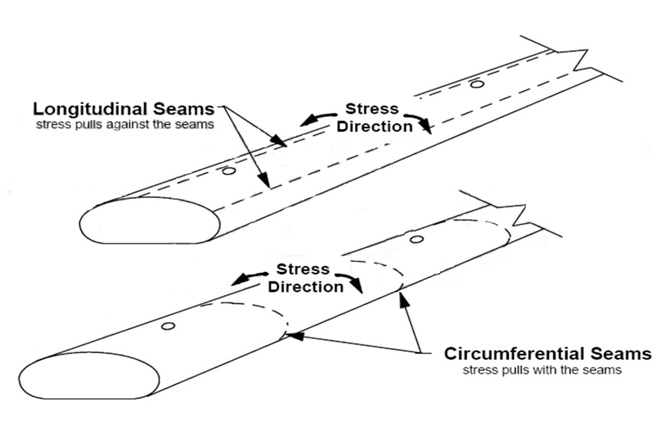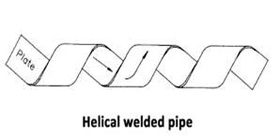Welded line pipes enjoy a wide acceptance in oil and gas transporting market for its selection variety and relatively low cost. According to the different welding seams, welded line pipes can be further categorized into two types, the helical welded pipes and longitudinal welded pipes. Both have extensive application in the field, but due to different manufacturing techniques, they have many differences. Now let’s get to know the differences of both types related to the following aspects.

Comparatively speaking, longitudinal welded pipe has simple manufacturing and welding techniques. As the name shows, longitudinal pipe has a straight welding seam on the pipe surface. Different from the longitudinal pipe, the welding seam of which is vertical to the axial line of the pipe, helical welded pipe is rolled and welded according to certain helical angles. Therefore, helical welded pipe manufacturing, with complicated welding method, is more time-consuming. As for longitudinal welded pipes, to meet the required length of pipelines used in industry projects, short longitudinal pipes always need to be jointed and welded into a long enough pipe. Thus, inevitably, many T-shaped welding seams would appear in this welding process, largely increasing the possibility of welding defects. Besides, T-shaped welding joints incline to cause welding residual stress, which lays potential risk for future fatigue crack. Therefore, though having low cost and simple manufacturing technique, the overall performance of longitudinal welded pipe is less promising than the helical welded pipes.
Strength tolerance is the one of decisive factors determining the quality of line pipes. Stress analysis is the basis of measuring strength tolerance. Welded pipes seams withstand two stresses, the radial stress δY and axial stress δX. The compound stress can be derived from the formula δ=δY(l/4sin2α+cos2α)1/2 , α refers to the helical angle. Normally, the angle for helical welded pipe is 50° to 70° while for longitudinal pipe is of course 90°, so it can be concluded that the compound stress sustained by helical welded pipes is 60 to 85% of the latter. Obviously, under same working pressures, the strength exposed to helical pipe is lower, thus, for pipes of same diameter, wall thickness of helical welded pipes could be manufactured thinner than longitudinal welded pipes.

From the above, we can know:
Therefore, compared to longitudinal welded pipes, the helical pipe, with lower sustained stress, can guarantee more safety and longer service of life.

As for longitudinal welding, the width of the steel plate should be strictly stuck to the diameter of the pipe. Once the steel is cut for rolling, it cannot be changed, which means the diameter of the longitudinal pipe is fixed. While for helical welding, it can achieve various diameters of pipes by rolling the steel plate with different angles. Thus, helical welding can be used to manufacture pipes of different diameters. It can use narrower steel to manufacture pipes into large diameter using large helical angle. But for pipes of the same length, the helical welding seam is 30 to 100% longer than the longitudinal welding seam, thus, the welding cost is higher and the welding efficiency is lower. Therefore, longitudinal welding is more used to produce small diameter pipes, while helical welding is always used for pipes of large diameters.
Generally speaking, helical welded pipes own more advantages than longitudinal welded pipes, enjoying more promising market; however, the manufacturing method is more complicated and it is more expensive. Knowing the differences of both pipes will help suppliers and clients choose the most suitable pipes according to your application and budget.